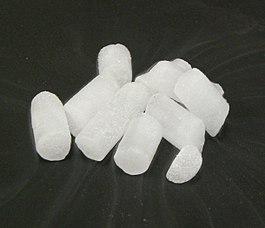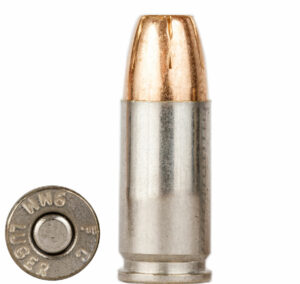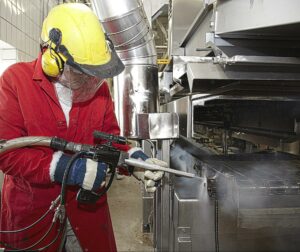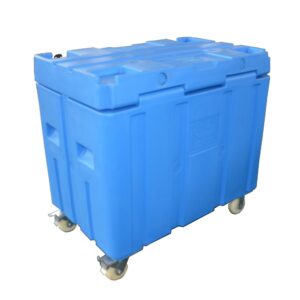
Dry ice blasting is a technology used to clean contaminated surfaces. The dry ice grains (CO2 in solid form with a temperature of -80°C) get taken away by a compressed air flow and fly against the contaminated layer at high speed. During the clash with the contaminated layer, the ice grains start to evaporate, which causes an expansion shock that makes the dirt loose. Besides that, the contaminated layer also undergoes a thermal shock because of the big temperature difference between the dry ice and the environment. Last but not least, there will also be an impact of the grains on the contaminated layer, with an abrasive effect on the dirt, like you have with sandblasting.

If you compare dry ice blasting to sandblasting, you will easily find the fundamental advantage of this technique: the abrasive material (the dry ice grain) evaporates and doesn’t get into the environment, which is the case with sandblasting and this gives a lot of shielding work and cleaning to do. The evaporated CO2 grains form CO2 gas, which is not harmful and can be used in the food industry. The disadvantage is that the dry ice grains disappear, but the dirt that comes off doesn’t disappear. These particles that came off, fly around at high speed and pollute the environment, as a result of the compressed air flow. With laser cleaning, you don’t have this disadvantage: the particles that came off, mainly evaporate and the remaining dust gets vacuumed right away, and that’s how the environment stays perfectly clean. This also explains why laser cleaning is so popular in the pharmaceutical industry and the food industry.

The dry ice beam is not supposed to get on your fingers or on other body parts. Not only because it’s so cold and immediately causes frostbites, but also because the particles will have the same effect on your skin as they have on the dirt you are removing. A full protective suit is absolutely necessary with dry ice blasting, same with sandblasting. The noise pollution is also very big. Not only the operator of the machine, but everyone in a close area to the machine, needs hearing protection with dry ice blasting. Laser Cleaning is much safer and almost doesn’t make any noise. You only need protective glasses, but other than that you don’t really need anything else. The dirt that comes off, doesn’t fly around, the workpiece stays cool and if you do shine on your hand with the laser beam for a second, it won’t hurt.
When the thermal shock between the dry ice grains and the contaminated layer gets bigger, dry ice blasting will work better, this is the case with very hot work layers. That’s why industrial baking ovens are frequently heated to a very high temperature for dry ice cleaning. This isn’t always as good for the baking trays and the coatings though, but it’s also possible that some pollution that the dry ice cleaning doesn’t reach, gets burned-in. Laser Cleaning can be used for a warm oven as well as a cold oven (or any other workpiece) and works good in both cases.

Like you can see in the name, for dry ice blasting you will need dry ice. These grains are difficult to handle and expensive. You can’t store a stock of grains in a normal warehouse because they need to be kept at -80°C and they are also not so easy to find. The grains are supplied in insulated containers or bags and must be used within a certain period of time or otherwise everything evaporates. During the cleaning itself, the dry ice machine also uses large quantities of these grains, making a permanent supply of new bags necessary. The grains need to be produced with specialized equipment and are really difficult to supply and to store. This is what makes dry ice blasting a very expensive cleaning technique. This is where the unique advantage of laser cleaning comes up: there are no consumables because the light beam does all the work. This means that you won’t have to lug with bags of sand or containers of dry ice grains anymore.
Although this can’t be generally considered, the cleanliness level of dry ice blasting is mostly less than laser cleaning. Sandblasting sometimes does a better job than laser cleaning (also depending on the power of the laser beam), but as a disadvantage, the surface of the irradiated workpiece gets affected by the impact of the sand grains. With dry ice blasting, you don’t have this kind of problem, but the depth of the cleaning is reduced with dry ice blasting. Laserflux is already frequently used in the food industry to clean molds and ovens that weren’t completely clean with dry ice blasting or where dry ice blasting took way too long. The price of the grains and the duration of a cleaning, make dry ice blasting one of the most expensive cleaning techniques on the market.
Interested in laser cleaning? Experience a free demo at our demo center to see all the advantages of laser cleaning for yourself.